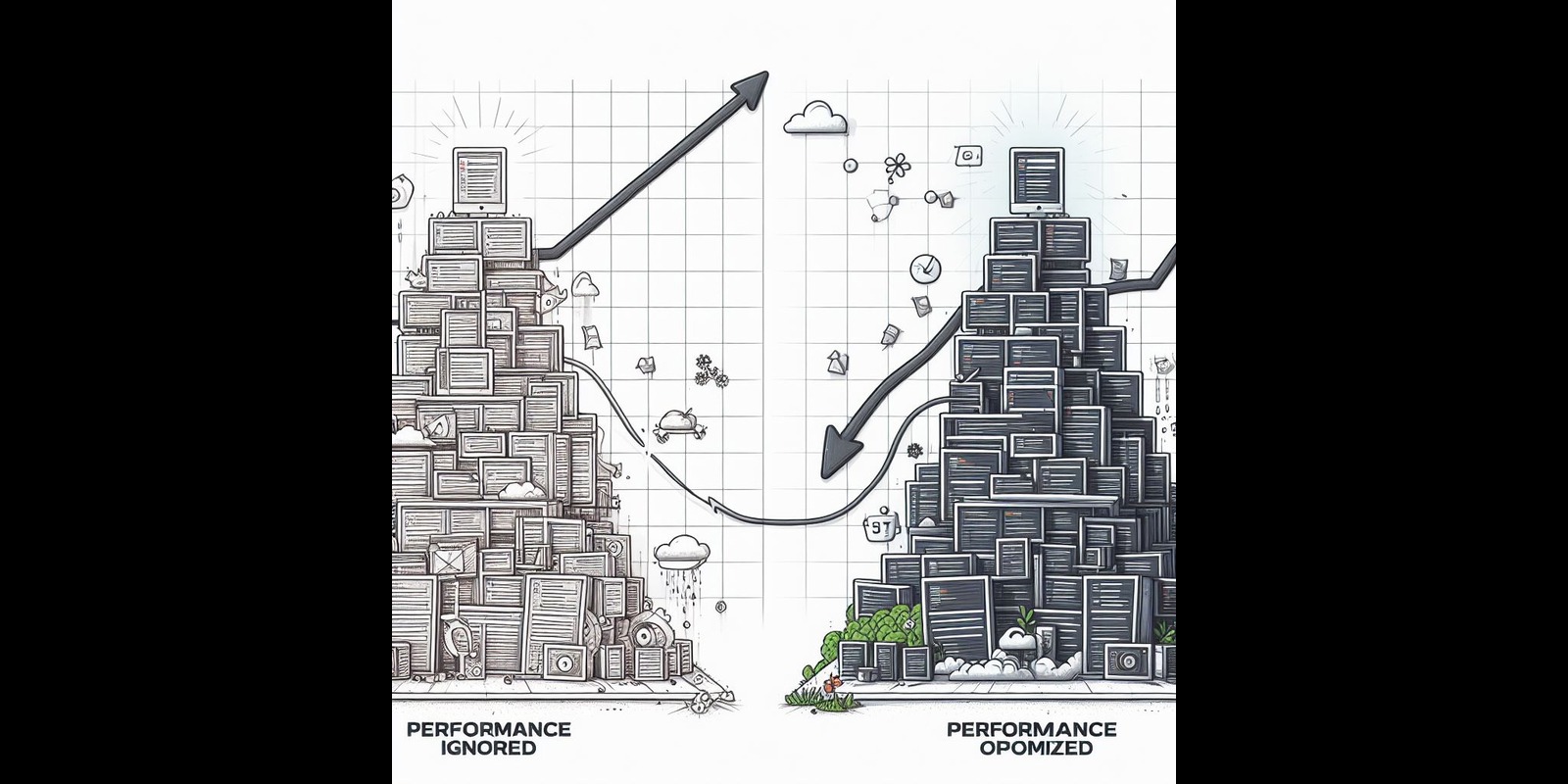The Looming Shadow: Long-Term Impact of Neglecting Application Performance
 Ayoub Touba
Ayoub Touba
In today's fast-paced digital world, application performance is no longer a luxury – it's a necessity. While the consequences of a slow app might seem minor at first, neglecting performance can lead to a snowball effect of problems that can cripple your application in the long run. Let's delve into the hidden costs of ignoring application performance and explore why it's crucial to prioritize optimization from the get-go.
The Technical Debt Trap:
Imagine building a house on a shaky foundation. Over time, cracks begin to appear, repairs become more frequent, and the entire structure becomes vulnerable. This analogy perfectly illustrates the concept of technical debt in application development. When performance isn't optimized from the start, each line of unoptimized code, inefficient query, or large asset adds a layer of technical debt. While these issues might seem manageable initially, they accumulate over time, making the application harder to maintain and scale.
Here's how neglecting performance creates technical debt:
Spaghetti Code: Unoptimized code becomes tangled and difficult to understand, making future modifications and bug fixes a time-consuming nightmare.
Performance Bottlenecks: Inefficient code leads to performance bottlenecks, hindering the application's ability to handle increased user traffic or data growth.
Hidden Dependencies: Quick fixes and workarounds implemented to address performance issues can create hidden dependencies that make future refactoring even more challenging.
The Cost of Climbing Out:
The longer you wait to address technical debt, the steeper the climb becomes. Refactoring a poorly performing application is a significant undertaking that requires dedicated resources and time. This translates to lost developer productivity and potential delays in implementing new features or functionalities.
Here are some of the financial implications of neglecting performance:
Increased Development Costs: The time spent fixing performance issues is time taken away from developing new features or enhancements.
Scaling Challenges: A poorly performing application may struggle to handle increased user loads, potentially requiring expensive infrastructure upgrades.
Security Risks: Performance issues can sometimes leave applications vulnerable to security attacks, leading to data breaches and reputational damage.
Beyond the Code:
The impact of neglecting performance extends beyond technical hurdles. Slow applications directly affect user experience, which can have a significant impact on your business:
User Frustration and Abandonment: Nobody enjoys waiting for a slow application to load. Frustrated users are more likely to abandon tasks and potentially switch to a competitor's offering.
Reduced Conversion Rates: If your application's performance hinders the completion of online transactions, you're losing valuable conversions and potential revenue.
Negative Brand Perception: A slow and unresponsive application can damage your brand image and create a perception of unreliability and lack of attention to detail.
Taking a Proactive Approach:
The good news is that the long-term consequences of neglecting performance can be avoided by adopting a proactive approach. Here are some steps you can take to ensure your application stays healthy and performs optimally:
Performance Profiling: Regularly profile your application to identify performance bottlenecks and areas for improvement.
Code Optimization: Prioritize clean and efficient code practices from the start to minimize technical debt.
Performance Testing: Integrate performance testing into your development lifecycle to catch issues early and prevent regressions.
Application Monitoring: Continuously monitor your application's performance in production to identify any potential problems before they impact users.
Conclusion:
Application performance is an investment that pays off in the long run. By prioritizing performance optimization from the start, you can avoid the hidden costs of technical debt, ensure a positive user experience, and ultimately drive business success. Remember, a well-performing application is a happy application, and happy applications lead to happy users and a thriving business.
Subscribe to my newsletter
Read articles from Ayoub Touba directly inside your inbox. Subscribe to the newsletter, and don't miss out.
Written by

Ayoub Touba
Ayoub Touba
With over a decade of hands-on experience, I specialize in building robust web applications and scalable software solutions. My expertise spans across cutting-edge frameworks and technologies, including Node.js, React, Angular, Vue.js, and Laravel. I also delve into hardware integration with ESP32 and Arduino, creating IoT solutions.